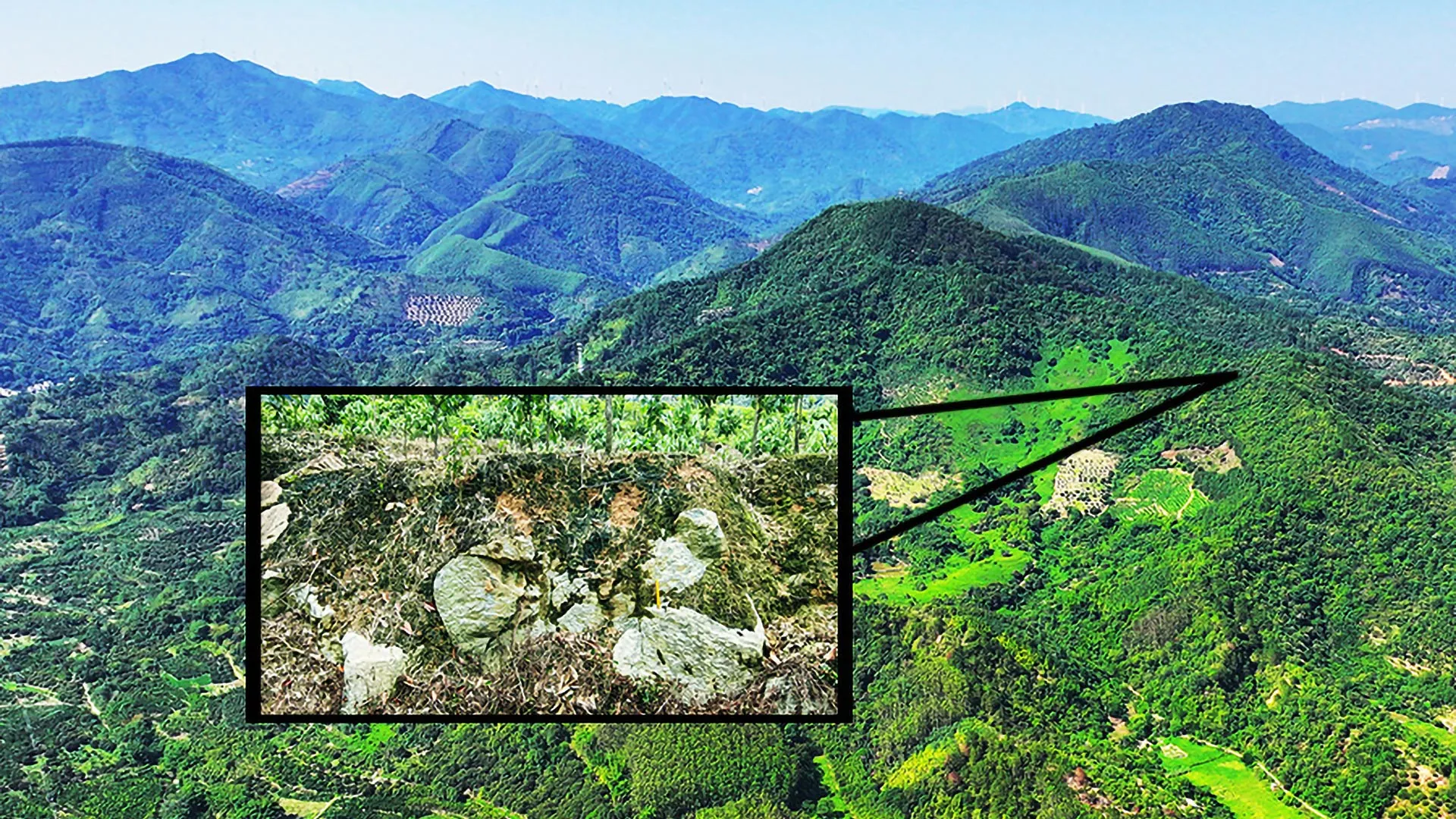Scientists uncover a massive hidden crater in China that rewrites Earth’s recent history
A newly discovered Holocene mega-crater in China exposes a surprisingly intense and recent meteorite strike.
- Date:
- November 14, 2025
- Source:
- American Institute of Physics
- Summary:
- A massive, well-preserved impact crater has been uncovered in Guangdong, revealing the signature of a powerful meteorite strike during the Holocene. Measuring 900 meters across, it dwarfs other known craters from the same era. Shock-damaged quartz confirms the intense forces involved. Its survival in a high-erosion environment makes it a geological rarity.
- Share:

A recently uncovered and unusually intact impact crater is offering scientists new insights into how objects from space have struck Earth throughout its history.
Researchers from Shanghai and Guangzhou, China, describe their findings in the journal Matter and Radiation at Extremes (AIP Publishing). They identified the feature as the Jinlin crater, a bowl-shaped structure positioned on a hillside and protected within a thick layer of weathered granite.
A Rare and Young Crater in Southern China
The crater lies in Zhaoqing, Guangdong Province, and is one of only about 200 confirmed impact sites on the planet. Its age places it among the youngest known. Soil erosion measurements indicate that it likely formed during the early-to-mid Holocene -- the geological interval that began at the end of the last ice age roughly 11,700 years ago. With a width of 900 meters, it is the largest verified crater from this period -- surpassing Russia's Macha crater, which measures 300 meters and was previously considered the biggest Holocene impact site.
"This discovery shows that the scale of impacts of small extraterrestrial objects on the Earth in the Holocene is far greater than previously recorded," said author Ming Chen.
Clues About the Object That Struck Earth
The team concluded that the object responsible was a meteorite rather than a comet. A cometary collision would have produced a much larger crater, likely at least 10 kilometers across. What remains unknown is whether the meteorite was composed of stone or iron, a distinction that requires further study.
Remarkable Preservation and Shock Features in Quartz
One of the most unexpected aspects of Jinlin is how well it has survived. The area experiences heavy rainfall, strong monsoons, and high humidity, all of which rapidly erode rock. Even so, the crater remains clear and well defined. Inside its granite layers, researchers discovered numerous grains of quartz marked by tiny structures known as planar deformation features. These microscopic signatures are widely recognized by geologists as a hallmark of an impact event.
"On the Earth, the formation of planar deformation features in quartz is only from the intense shockwaves generated by celestial body impacts, and its formation pressure ranges from 10 to 35 gigapascals, which is a shock effect that cannot be produced by any geological process of the Earth itself," said Chen.
Significance for Understanding Earth's Impact History
Although every location on Earth is thought to have had similar chances of being hit by an extraterrestrial object over time, the evidence of past collisions does not survive equally well. Rock types, climate, and erosion patterns vary across the planet, allowing many ancient craters to vanish entirely. The survival of the Jinlin crater therefore provides an unusually clear window into events that shaped the recent geological past.
"The impact crater is a true record of Earth's impact history," said Chen. "The discovery of the Earth impact crater can provide us with a more objective basis for understanding the distribution, geological evolution, and impact history and regulation of small extraterrestrial bodies."
Story Source:
Materials provided by American Institute of Physics. Note: Content may be edited for style and length.
Journal Reference:
- Ming Chen, Dayong Tan, Wenge Yang, Ho-Kwang Mao, Xiande Xie, Feng Yin, Jinfu Shu. Jinlin crater, Guangdong Province, China: Impact origin confirmed. Matter and Radiation at Extremes, 2026; 11 (1) DOI: 10.1063/5.0301625
Cite This Page: